


JOHANNES BRAHMS 1833 -
Acknowledgements
Brahms: by the photographer C. Brasch, Berlin, 1889 – Digital collection, New York Public Library, USA. Schumann: detail, lithograph by the Austrian artist Josef Kriehuber (1800-
Including:
Joseph Joachim
and Max Bruch

Vb-
xxxxxThe German composer Johannes Brahms was one of the leading composers of symphonic music in the 19th century. His works included four symphonies, concertos for piano and violin, sonatas, chamber music, and over 150 songs. He is remembered for his choral work A German Requiem, but it was his Hungarian Dances, the first of which were composed in 1869, that brought him fame both at home and abroad. As a conservative, drawn to the classical composers like Haydn and Beethoven, he was criticised by the avant-
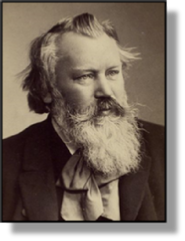 xxxxxJohannes Brahms, was one of the leading composers of symphonic music in the 19th century. He performed and conducted many of his own works, and these included 4 symphonies, concertos for piano and violin, sonatas, chamber music, over 150 songs, and his famous choral work A German Requiem. During his career he gained a great deal of popularity, both at home and abroad -
xxxxxJohannes Brahms, was one of the leading composers of symphonic music in the 19th century. He performed and conducted many of his own works, and these included 4 symphonies, concertos for piano and violin, sonatas, chamber music, over 150 songs, and his famous choral work A German Requiem. During his career he gained a great deal of popularity, both at home and abroad -
xxxxxBrahms was born in Hamburg, Germany, but he was to spend most of his productive life in Vienna. His father, a bassoon and double-
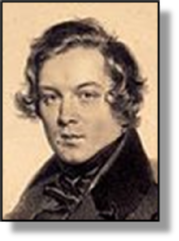 xxxxxIt was on this tour, while visiting Hanover, that he met the violin virtuoso Joseph Joachim, a man who became a life-
xxxxxIt was on this tour, while visiting Hanover, that he met the violin virtuoso Joseph Joachim, a man who became a life-
 xxxxxIn the late 1850s Brahms worked as a teacher and conductor at the court of Detmold, and also directed the choral society at Gottingen. He paid his first visit to Vienna in 1862, and settled there the following year. There his reputation grew steadily, and it became firmly established in 1868 with the completion of his largest choral work A German Requiem. Composed to express his sorrow at the death of his mother, it was performed in Bremen Cathedral on Good Friday. This made him popular throughout Germany, but his fame spread much further the following year with the publication of 10 of his 21 Hungarian Dances. Written originally for four hands, these wild and passionate gypsy tunes, brilliantly arranged, were a phenomenal success across the musical world. By the 1870s he had become the city’s maestro and had taken up permanent lodgings. He was appointed principal conductor of the Gesellschaft der Musikfreunde (Society of Music Lovers) in 1872, and for three seasons he was director of the Vienna Philharmonic Orchestra.
xxxxxIn the late 1850s Brahms worked as a teacher and conductor at the court of Detmold, and also directed the choral society at Gottingen. He paid his first visit to Vienna in 1862, and settled there the following year. There his reputation grew steadily, and it became firmly established in 1868 with the completion of his largest choral work A German Requiem. Composed to express his sorrow at the death of his mother, it was performed in Bremen Cathedral on Good Friday. This made him popular throughout Germany, but his fame spread much further the following year with the publication of 10 of his 21 Hungarian Dances. Written originally for four hands, these wild and passionate gypsy tunes, brilliantly arranged, were a phenomenal success across the musical world. By the 1870s he had become the city’s maestro and had taken up permanent lodgings. He was appointed principal conductor of the Gesellschaft der Musikfreunde (Society of Music Lovers) in 1872, and for three seasons he was director of the Vienna Philharmonic Orchestra.
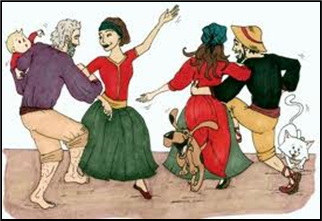 xxxxxSome of his early works were somewhat formal and, being decidedly academic, were regarded as old fashioned by the progressive composers of his day. After settling in Vienna, however, his music mellowed and he took on the mantle of Beethoven, the man he most admired. In his later years his compositions, often tinged with sadness and contemplative in mood, came to be known as “autumnal”. Despite the criticism levelled against his works by the “modernists”, many are firm favourites in concert repertoires of today. Among these are his four symphonies, his concertos for piano and violin, his variations on Handel and Paganini, his clarinet and piano quintets, his three string quartets, and his three violin sonatas. Nor has his Hungarian Dances lost their popularity. And it was these compositions, and many others besides, that won him acclaim and added to his reputation during his tours across Europe.
xxxxxSome of his early works were somewhat formal and, being decidedly academic, were regarded as old fashioned by the progressive composers of his day. After settling in Vienna, however, his music mellowed and he took on the mantle of Beethoven, the man he most admired. In his later years his compositions, often tinged with sadness and contemplative in mood, came to be known as “autumnal”. Despite the criticism levelled against his works by the “modernists”, many are firm favourites in concert repertoires of today. Among these are his four symphonies, his concertos for piano and violin, his variations on Handel and Paganini, his clarinet and piano quintets, his three string quartets, and his three violin sonatas. Nor has his Hungarian Dances lost their popularity. And it was these compositions, and many others besides, that won him acclaim and added to his reputation during his tours across Europe.
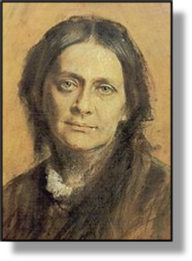 xxxxxThroughout his career Brahms was surrounded by the lively romantic movement -
xxxxxThroughout his career Brahms was surrounded by the lively romantic movement -
xxxxxIn reality, however, Brahms, was appreciably more than a dogged believer in classical tradition. He wrote big works such as symphonies and concertos, produced variations and a large volume of chamber music in the classical idiom, but there was also a romantic side to his work. He greatly admired the Viennese waltzes of Johann Strauss, produced his own collection of dances, and made advances in the creation of harmony and melody. In fact, there was an outburst of emotion born of a romantic spirit to be found in much of his work. Indeed, it might well be said that his greatness and importance lie not only in his renewal of classicism, but also in the subtle balance he struck between traditional form and Romantic sentiment.
xxxxxAs a person Brahms did not make friends easily. He was quick to criticise others, and he had a sharp tongue to assist him in this. Behind his gruff exterior, however, he was a kindly man with a genuine love for children and animals. Apart from Clara Schumann and Joachim, he was a close friend of Johann Strauss -
xxxxxIncidentally, Brahms declined a honorary doctorate of music from Cambridge University in 1877, but accepted one from the University of Breslau two years later. As a gesture of appreciation he composed his colourful Academic Festival Overture, partly based on student songs, and this has remained a popular work ever since. ……
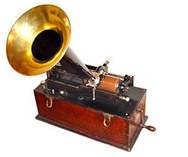
xxxxx……xxIn 1889 a representative from Thomas Edison, the inventor of the phonograph, visited Brahms in Vienna and did an experimental recording of his first Hungarian Dance. Played on the piano, it was the first recording made by a major composer. In the same year he was awarded the freedom of the city of Hamburg, his place of birth. ……
xxxxx……xxIt would seem that Brahms’ meeting with Liszt in 1853 was not a total success. In honour of his guest the great Hungarian composer played his Sonata in B minor and, according to some then present, the young Brahms fell asleep during the performance! ……
xxxxx……xxAnother story, also unconfirmed, alludes to Brahms’ aggressive temperament. It is said that one evening, on leaving a party in Vienna, he apologised should there be anybody present he had not insulted!
xxxxxThe Austro-
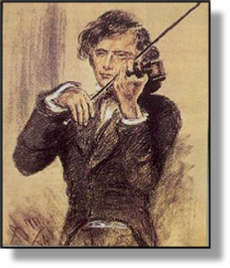 xxxxxAs we have seen, the Austro-
xxxxxAs we have seen, the Austro-
xxxxxJoachim was born in Kittsee in today’s Austria. He studied music at the Vienna Conservatory, and then lived in Leipzig, where he became a protégé of the German composer Felix Mendelssohn. A violinist of extraordinary talent, on his first visit to England, at the age of 12, he gave a performance of Beethoven’s Violin Concerto in London. Conducted by Mendelssohn himself, it was rapturously received and made him for ever popular with the English public.
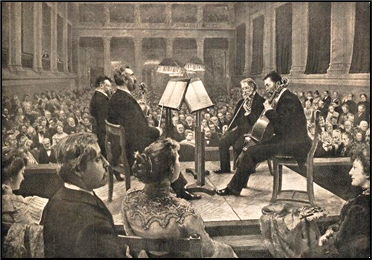 xxxxxAfter Mendelssohn’s death in 1847 he taught at the Conservatorium in Leipzig and played in the Gewandhaus Orchestra before moving to Weimar. He spent several years there working as concertmaster to Franz Liszt, but in 1852 he settled in Hanover and, abandoning the romantic ideals of the New German School, turned to the classical forms of the great masters. The following year he befriended Brahms, and over the next forty years he played and conducted his music. Brahms valued his musical advice and dedicated his Violin Concerto to him in 1878. Joachim’s own compositions included a number of pieces for violin and orchestra, and overtures for two of Shakespeare’s plays, Hamlet and Henry IV. His best known work is his Violin Concerto No.2 “in the Hungarian manner”, first performed in 1860 and dedicated to Brahms. He is remembered today for his famous Joachim (String) Quartet (illustrated), established in 1869 after he had become director of the Royal Academy of Music in Berlin.
xxxxxAfter Mendelssohn’s death in 1847 he taught at the Conservatorium in Leipzig and played in the Gewandhaus Orchestra before moving to Weimar. He spent several years there working as concertmaster to Franz Liszt, but in 1852 he settled in Hanover and, abandoning the romantic ideals of the New German School, turned to the classical forms of the great masters. The following year he befriended Brahms, and over the next forty years he played and conducted his music. Brahms valued his musical advice and dedicated his Violin Concerto to him in 1878. Joachim’s own compositions included a number of pieces for violin and orchestra, and overtures for two of Shakespeare’s plays, Hamlet and Henry IV. His best known work is his Violin Concerto No.2 “in the Hungarian manner”, first performed in 1860 and dedicated to Brahms. He is remembered today for his famous Joachim (String) Quartet (illustrated), established in 1869 after he had become director of the Royal Academy of Music in Berlin.
xxxxxIncidentally, in 1884 Joachim separated from his wife, an opera singer named Amalie whom he had married in 1863. Brahms sympathised with Amalie, and this caused a rift between the two friends for a number of years.
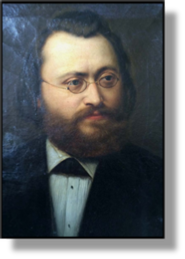 xxxxxJoachim knew the German romantic composer Max Bruch (1838-
xxxxxJoachim knew the German romantic composer Max Bruch (1838- Joachim was the soloist, but Bruch was displeased with his performance and clamed that it had ruined the work! In the same year he produced Kol Nidrei, an adagio on Hebrew melodies for violin and orchestra, and this, like his first violin concerto, has survived the test of time. In recognition of his contribution to music, he was appointed professor at the Berlin Academy in 1892, and later became chairman of the city’s Academy of Arts.
Joachim was the soloist, but Bruch was displeased with his performance and clamed that it had ruined the work! In the same year he produced Kol Nidrei, an adagio on Hebrew melodies for violin and orchestra, and this, like his first violin concerto, has survived the test of time. In recognition of his contribution to music, he was appointed professor at the Berlin Academy in 1892, and later became chairman of the city’s Academy of Arts.
xxxxxBruch was born in Cologne and it was there that he received his early musical training. During a long career as teacher, conductor and composer he held a number of musical posts throughout Germany, including appointments at Koblenz, Berlin and Bonn, and in the early 1880s spent three seasons as director of the Liverpool Philharmonic Society. He retired in 1910 and died in his house in Friedenau, a quarter in the city of Berlin.


